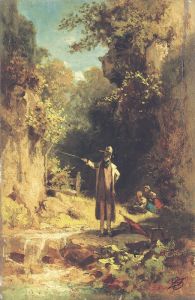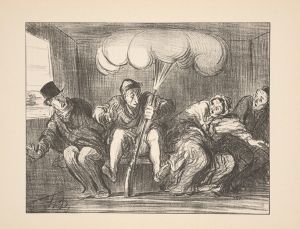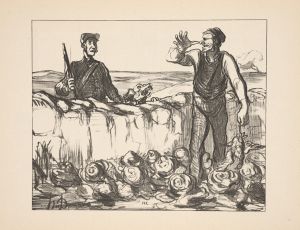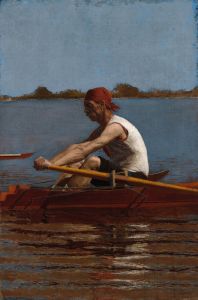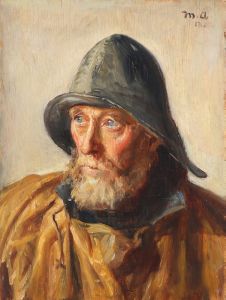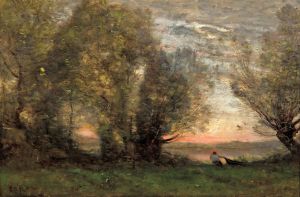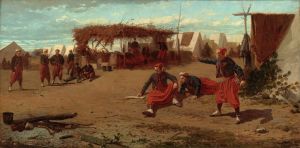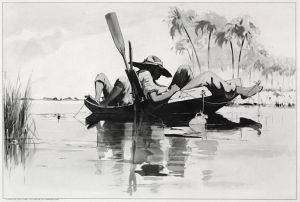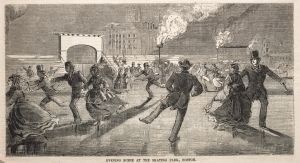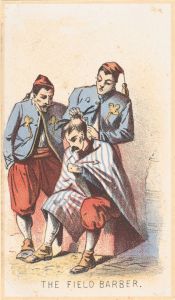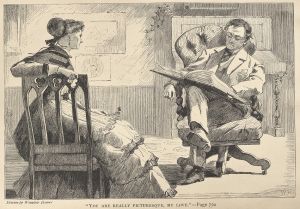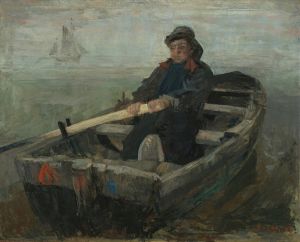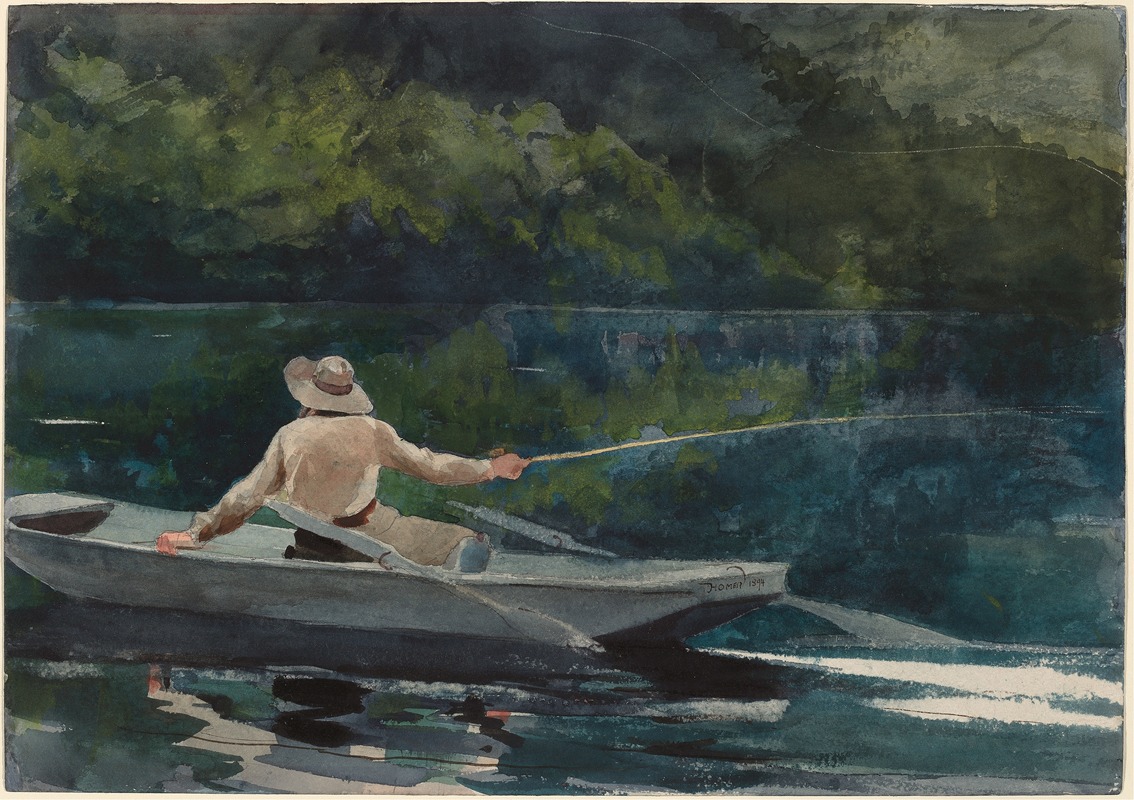
Casting, Number Two
A hand-painted replica of Winslow Homer’s masterpiece Casting, Number Two, meticulously crafted by professional artists to capture the true essence of the original. Each piece is created with museum-quality canvas and rare mineral pigments, carefully painted by experienced artists with delicate brushstrokes and rich, layered colors to perfectly recreate the texture of the original artwork. Unlike machine-printed reproductions, this hand-painted version brings the painting to life, infused with the artist’s emotions and skill in every stroke. Whether for personal collection or home decoration, it instantly elevates the artistic atmosphere of any space.
Winslow Homer, an eminent American painter known for his marine subjects, created "Casting, Number Two" in 1894. This painting is part of Homer's later body of work, which often focused on themes of nature and human interaction with the environment. Homer, who spent much of his later life in Prouts Neck, Maine, was deeply inspired by the rugged coastline and the sea, which frequently served as the backdrop for his art.
"Casting, Number Two" depicts a solitary fisherman engaged in the act of casting a fishing line. The painting captures the essence of man's relationship with nature, a recurring theme in Homer's work. The composition is notable for its dynamic portrayal of movement and the artist's skillful use of light and shadow to convey the time of day and atmospheric conditions. Homer's technique in this painting reflects his mastery of watercolor, a medium he often employed to capture the fluidity and translucence of water and sky.
The setting of "Casting, Number Two" is characteristic of the New England coast, with its rocky shores and expansive ocean views. This environment provided Homer with endless inspiration and allowed him to explore the interplay between humans and the natural world. The fisherman's stance and the tension in the fishing line suggest a moment of anticipation, a theme that resonates with the viewer and invites contemplation of the solitary yet harmonious existence of the fisherman within the vastness of nature.
Homer's work during this period is marked by a simplicity of form and a focus on the elemental aspects of the scene. His ability to convey complex emotions and narratives through seemingly straightforward compositions is a testament to his skill as an artist. "Casting, Number Two" exemplifies this approach, as it captures a moment that is both specific and universal, highlighting the timeless nature of human interaction with the sea.
The painting is part of a series of works by Homer that explore similar themes and settings. His fascination with the sea and the people who make their living from it is evident in many of his paintings, which often depict fishermen, sailors, and coastal landscapes. These works are celebrated for their authenticity and attention to detail, as well as their ability to evoke the sensory experiences of life by the sea.
"Casting, Number Two" is housed in a private collection, and like many of Homer's works, it continues to be studied and admired for its artistic and historical significance. Winslow Homer's legacy as a painter is firmly established, and his contributions to American art are widely recognized. His paintings, including "Casting, Number Two," offer a window into the past and continue to inspire appreciation for the beauty and power of the natural world.





